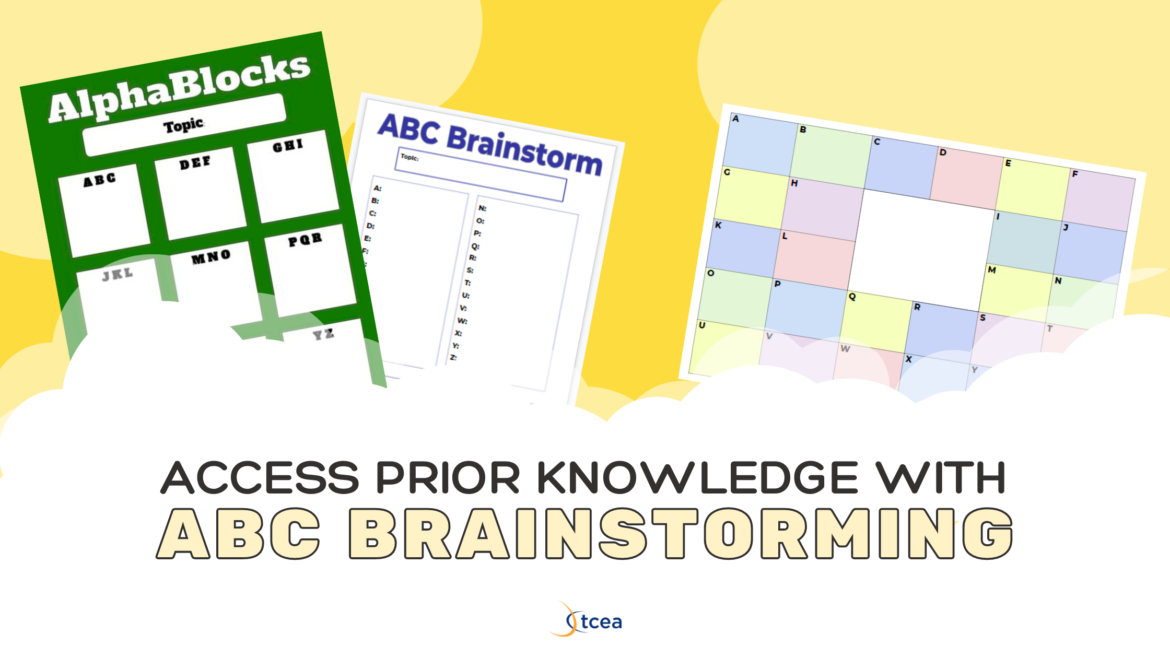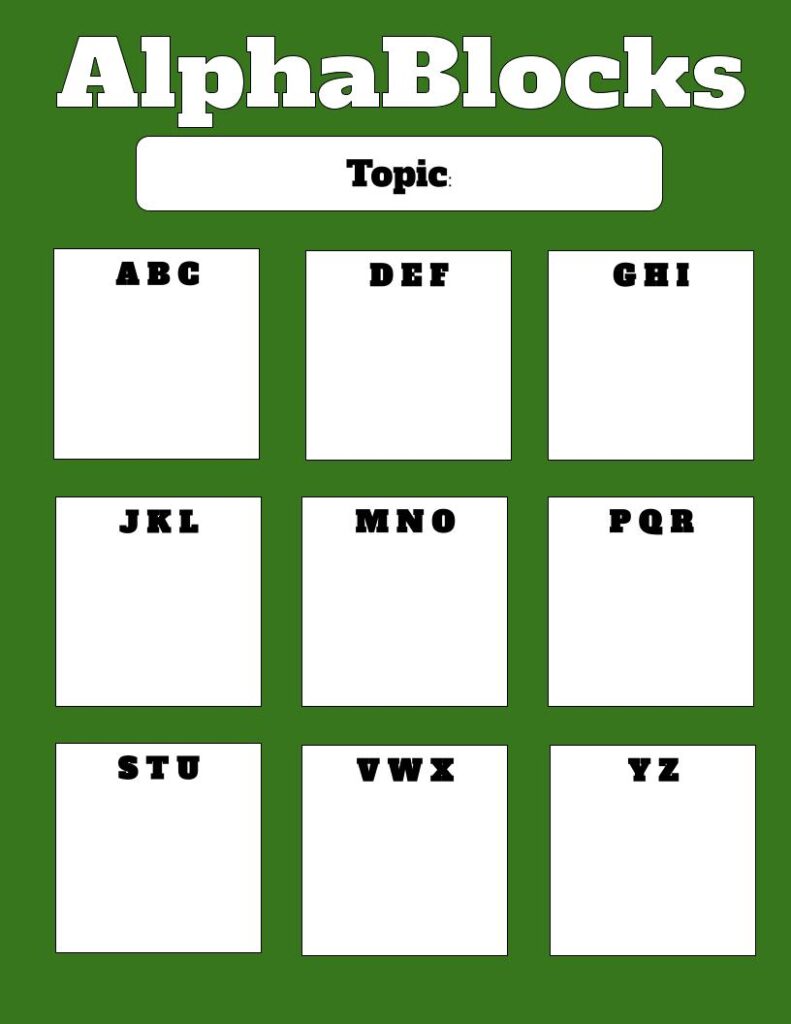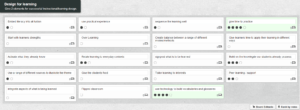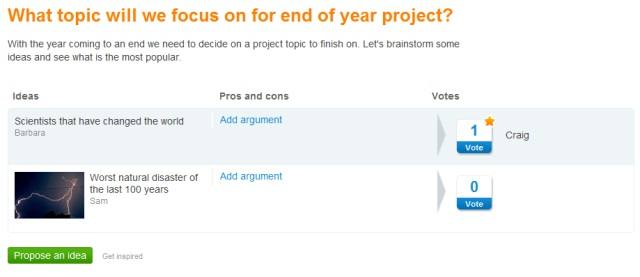The ABC Brainstorming strategy is an excellent way to access student’s prior knowledge. According to John Hattie, activating prior knowledge (0.98) is a powerful teaching strategy that has great impact on student achievement.
About ABC Brainstorming
ABC Brainstorming helps to structure students’ thinking by asking them to generate ideas that begin with each letter of the alphabet. It is a quick way to generate thoughts and measure prior knowledge. It is sometimes called the Alphabet Brainstorm.
Steps
Preparation
- Select the general topic.
- Prepare a template organized with the 26 letters of the alphabet and a spot next to each letter where students can record ideas.
- If this is the first time using the activity, you can prepare a completed ABC brainstorming template about a different topic. Write the general topic at the top or in the middle of the page, and then write a word, phrase, or sentence beginning with each letter related to the topic.
Activity Steps
- Select a topic. Topics that work well with ABC Brainstorming tend to be broad.
- Distribute a template and have students enter the name of the topic at the top or in the middle of the template.
- Ask students to think of at least one word, sentence, or idea related to the topic that begins with each letter of the alphabet. They should then enter them on the template in any order. However, encourage students to try to think of at least one idea for each letter, and to think of more than one for a letter if they are able to. Make sure you give students enough time to think of a lot of ideas.
- Next, debrief as a whole class or in small groups. Ask students to share what they brainstormed for each letter. Students compare and contrast their ideas.
- Allow students to reflect on their learning. Students could respond to questions such as: How is brainstorming different from other types of thought? How can brainstorming help you to learn a topic? How does the structure of this activity help you to come up with ideas you might not otherwise think of?
If the topic were World War II, students might list Allies, Bombers, Concentration Camps, D-Day, Europe, French Resistance, Germany, Hitler, Italy, Japan, and so on.
Templates
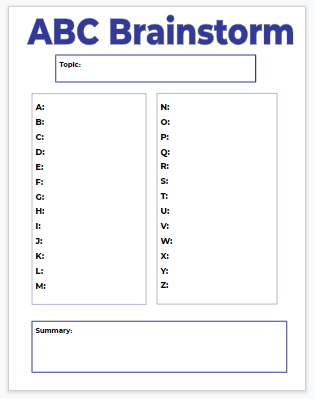
Google Slide Template
Variations
- AlphaBlocks: Rather than brainstorm ideas for all 26 letters of the alphabet, students brainstorm ideas within groups (“blocks”) of letters (ABC, DEF, GHI, etc). This simplifies and speeds up the brainstorming, while still causing students to turn their attention to and think about the topic at hand.
- Partial-alphabet brainstorm: You could give students only a portion of the alphabet to work with. Or you could divide the alphabet into quarters or thirds and have groups work on only one section.

